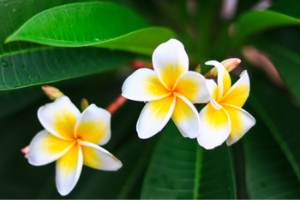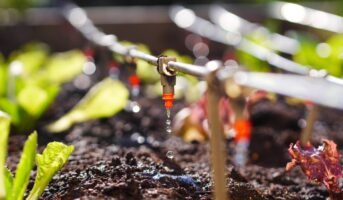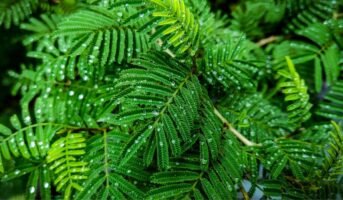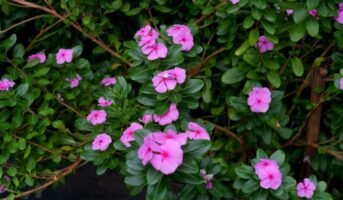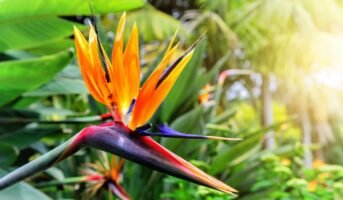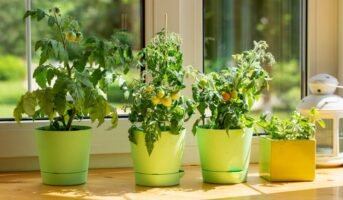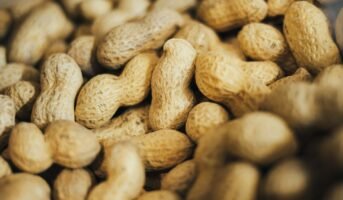The Champa tree or Plumeria is a stunning tropical flowering plant that can be grown according to the climate, indoors or outdoors. It is available in a wide range of shades. Despite their elaborate appearance, Plumeria is straightforward to grow.
These beauties are simple to cultivate in a backyard garden and do not require much maintenance. They grow best in patio pots and often grow to be little trees between 5 and 15 feet tall. This article will cover the fundamentals of increasing plumeria plants indoors year-round.
Champa tree: Key facts
| Botanical name | Plumeria |
| Common name | Frangipani, Nosegay, Plumeria, Champa, Pagoda tree, Temple tree, Hajari fool. |
| Family | Apocynaceae |
| Native tree | Mexico, Central America, and Venezuela |
| Tree size | 10 to 25 metres tall |
| Tree colour | White with small yellow centre-flowers |
| Soil type | Cactus potting mix, well-drained soil. |
| Season | May and November – Flowers |
| Toxic | Champa leaves are harmful to animals |
Champa tree: Physical description

Source: Pinterest
A large, evergreen tree with long, thin petals and fragrant blossoms is called a Champa or campaka in Sanskrit. The blooms are available in a spectrum of hues, from creamy white to orange. Since the beginning, the Champa flower has been a crucial part of Indian spiritual worship because of its potent and distinctive perfume.
It is a deciduous tree with thin bark. The stem is coloured grey-green and fashioned like a sausage. Due to its deciduous nature, the branch is all that remains once the leaves have dropped throughout the winter. The Champa flower’s five petals stand for psychological perfection and stand for sincerity, faith, dedication, aspiration, and surrender.
Champa flower: Varieties
Champa flowers come in various types, some of which are popular and widely cultivated.
Plumeria Rubra
Plumeria Rubra is a tall cultivar that can grow up to 25 feet high. It has pointy, long leaves and produces red, pink, and white flowers in bunches. It is great for outdoor areas as it can cover a large space and expand quickly.
Plumeria Pudica (Nag Champa)
Plumeria Pudica, also known as Nag Champa, is another type of Champa flower that is recognizable by its unique leaves. It has long leaves that resemble a spoon, with a wider centre and pointed ends. While it is a medium-sized cultivar, its flowering is sparse but impressive.
Plumeria Obtusa
Plumeria Obtusa has round, bright green leaves that are oval in shape and a bushy appearance due to its dense leaves. It has a slow rate of growth but produces huge, fragrant white flowers with a yellow centre in clusters, making it a great option for rooftop gardens.
Plumeria Alba
Plumeria Alba is a deciduous bush that grows between 2-8m high. It has slim, elongated leaves and produces large, highly fragrant white flowers with a golden centre.
Pink Champa
Pink Champa produces continuously blooming flowers with a pleasant fragrance from spring through fall. The beautiful blossoms of this cultivar are commonly used in ancient Hawaiian leis.
Champa tree: How to grow it?
Despite being a tropical plant, Plumeria trees can be grown in different areas with the right conditions:
Decide where to plant your Plumeria in your garden; they need full sun or shade. Due to their low cold tolerance, think about growing your Plumeria in a container with drainage holes so you can bring it indoors during the winter.
Plant when warm: You should plant your Plumeria in the early spring or any other time the season is warm.
Get the soil ready: Select a potting medium with perlite and sand that drains well and is somewhat acidic, such as a cactus potting mix.
Establish the Plumeria: The plumeria tree should be planted in the ground with its root ball flush with the surface by digging a hole that is as penetrating and wide as the root ball.
Fill the hole with dirt, cover it, and water it. Water to keep the soil wet but not soggy.
Champa tree: Propagation
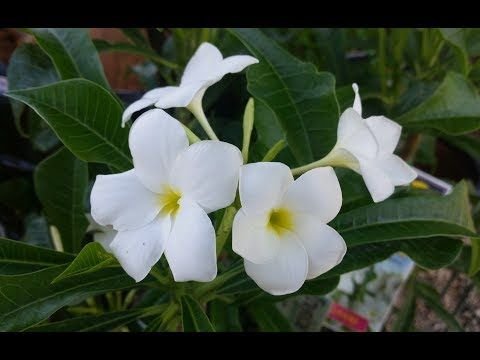
Source: Pinterest
Champa trees can be easily propagated with stem cuttings. Here’s how:
- Pick a 6-inch-long, healthy cutting from a Champa plant that is somewhat greener in hue; stay away from those that are wilted and brown.
- After that, using a pair of sharp scissors, remove/cut all the leaves off the cutting.
- You will notice that there will be some liquid trickling from the bottom of the cutting. You must keep the cutting in the shade for 5-7 days.
- Similarly, the plant heals the bottom portion and creates a layer of protection.
- It has developed a white coating and is now ready to be planted after around 5-7 days.
- Take a pot that is 4 to 6 inches in diameter now. Make a hole at the bottom for air to go through and extra water to drain.
- Create potting soil with the following ratios: Garden soil, 1 part coco peat, and 1 part sand.
- The container should be filled with this potting soil, leaving one to two inches at the top.
- Following that, plant the cutting there, and keep the pot out of direct sunlight for 15 to 20 days.
- Do not water the cutting for 7–10 days; let it develop roots first.
- If all goes according to plan, the cutting will begin to grow leaves after 15 to 20 days, at which point you can place them in full sunshine.
- When the plant has enough leaves, you should transfer it into a larger pot, preferably one 8 inches in diameter, because Champa plants can be rather large.
- Prepare the same potting soil, fill an 8-inch pot with it, and then plant this cutting inside.
- Rich, fast-draining soil is necessary for the Champa plant to thrive and produce flowers.
- Always use a lot of sand and quality fertiliser in the potting mixture, such as this one.
- Please keep it in a spot that can get direct sunshine because that is what it needs to grow and flower.
How to grow Champa trees from seeds?
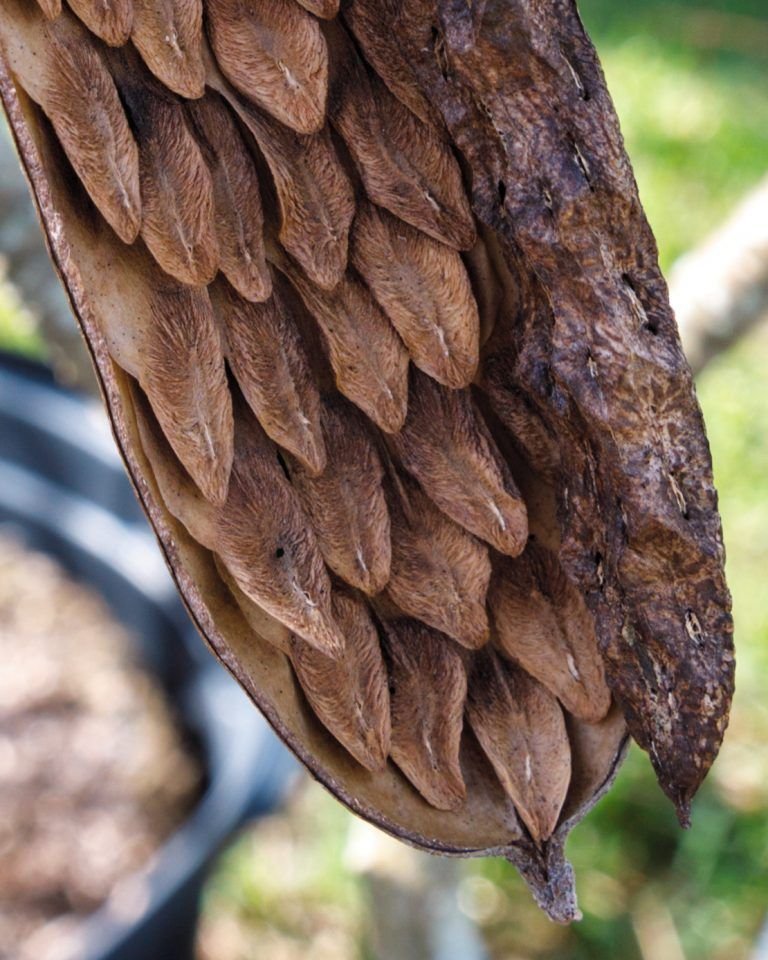
Source: Pinterest
- Purchase seed pods or seeds online or at a nearby garden centre.
- Rich, filling the well-drained potting mix in little plastic trays or pots would be best.
- The Plumeria seeds should be sown in the ground with their wings protruding.
- To encourage good contact, ensure the soil is firm around the roots.
- Keep the soil moist and place it in a sunny area.
- The germination period of sources is approximately 21 days.
Champa tree: Pruning
Make sure to choose a plant with numerous branches when purchasing a Champa plant from a nursery. Wait to repot the plant as soon as you get it. Allow the plant to adjust to its environment. Repot the plant ten days after the plant was purchased.
To encourage lateral and fuller growth of the plant, you should prune the tips of the branches. Once the flowering is finished, and the flowers have fallen off the stems, pruning can be done. Late winter or early spring is the perfect time to prune the plants. Pruning should be done carefully because excessive pruning can also reduce flowering.
Champa tree: Care tips
Champa tree: Watering requirements
You should add at least one inch (2.5 cm) of water to your Plumeria each week. You do not need to water the Plumeria if you leave it outside, where it usually rains. If the Plumeria is inside, your planting location may experience a drought. For this, saturate the top of the soil entirely once a week. After that, allow the water to drain out the bottom of the pot.
Champa tree: Sunlight requirements
Put your plant where it will receive 6 to 8 hours of direct sunlight daily. The flower buds on your Plumeria will not form if it does not receive enough sunshine. Put the pot in the direct sun if you are outside.
Champa tree: Space requirements
Yet another essential consideration while producing Champa is location. Plant it at least 10 to 20 feet away from other trees or plants to give its roots enough room to expand.
Champa tree: Temperature requirements
If the temperature dips below 50 °F (10 °C), bring your Plumeria inside. Plumeria struggles to survive in the cold. While Plumeria can thrive in a room-temperature environment, cold temperatures can kill the plant or cause it to go into hibernation.
Champa tree: Soil and fertiliser requirements
During the summer growing season, keep the soil equally moist but permit some drying between thorough waterings. Carefully avoid wet conditions as they could lead to root rot. Throughout the growing season, apply fertiliser to the plant every one to three weeks. In the spring and summer, thoroughly mist the cutting’s leaves and stem. In the fall and winter, stop fertilising the plant.
Champa tree: Pests and diseases
Champa’s aroma may draw flies, mites, aphids, and other insects. You can apply horticultural oil or an insecticide similar to malathion to its leaves. For best results, always adhere to the label’s instructions.
Champa tree: Benefits
- Plumeria flowers are cultivated in temples and graveyards, also typically found in Hawaiian garlands.
- Frangipani oil is an astringent to alleviate headaches and enhances the nervous system’s performance.
- The extracted oil is used in the cosmetics industry and is an antioxidant.
- In some parts of the world, it treats conditions like diabetes and asthma.
- Herpes, syphilis, and other diseases are treated with the plant’s roots and bark.
- Ulcers are treated using stem latex.
- The plants are used in the places of worship and symbols that are frequently visited.
- Birds, butterflies, and bees are drawn to it.
- Because it can withstand salty conditions, it is suitable for growing in beach environments.
Champa tree: Toxicity
For many people, the fluid of the Champa tree can irritate their skin. The white liquid sap that the plumeria plant produces makes it dangerous and poisonous. It is well known for producing skin rashes and even more severe issues when consumed by animals like dogs due to its toxic sap. The milky sapling is repulsive, and sucking on or ingesting plant pieces may cause gastrointestinal distress, including oral irritation, sweating, loss of appetite, vomiting, and dysentery.
Champa tree: Spiritual significance
The Champa flower holds significance in ancient Hindu scriptures not only for its enchanting fragrance but also for its beauty. Since time immemorial, the strong and distinct aroma of the Champa flower has played a crucial role in Indian spiritual worship. In the Bhagavata Purana (3:21), Lake Bindu Sarovara, where the sage Kardama Muni undertook austerities, is described as surrounded by marvelously fragrant and spiritually uplifting trees and flowers, with the champaka flower being specifically mentioned.
In the Puranas, Mount Kailash, the abode of Lord Shiva, is depicted as adorned with various alluring aromatic trees, including the champaka tree. During their search for Krishna, the gopis of Vrindavan conversed with the champaka trees in the Vrindavana forest, inquiring whether they had witnessed the passing of their beloved.
FAQs
How long does it take to grow Champa from seed?
The seeds take 7 days to more than a month to germinate, depending on how fresh they are.
Why is my Champa plant not blooming?
Keeping it out of direct sunlight may be one of the leading causes. Lack of potassium and phosphorus-rich fertilisers may also be a contributing factor, especially when Champa is produced in a potted environment.

Dhwani is a content management expert with over five years of professional experience. She has authored articles spanning diverse domains, including real estate, finance, business, health, taxation, education and more. Holding a Bachelor’s degree in Journalism and Mass Communication, Dhwani’s interests encompass reading and travelling. She is dedicated to staying updated on the latest real estate advancements in India.
Email: [email protected]
